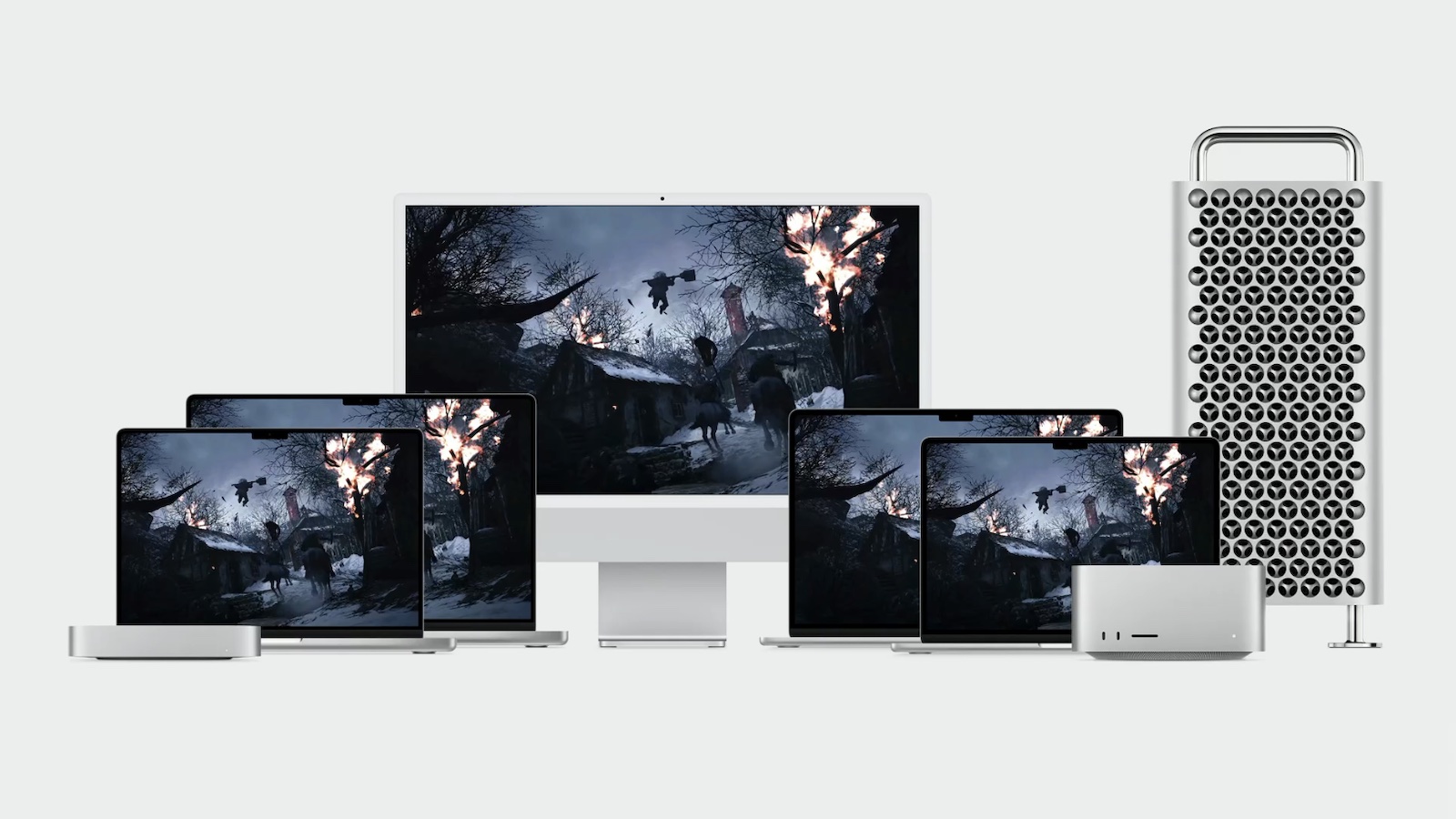Apple Discusses Push Towards High-End Mac Gaming in New InterviewInverse's Raymond Wong today published an in-depth
overview of Apple's increasing push towards high-end gaming on the Mac. The story includes commentary from Apple marketing managers Gordon Keppel and Leland Martin.

One of the biggest reasons that gaming has improved on the Mac in recent years is the switch from Intel processors to Apple silicon, resulting in MacBooks providing industry-leading performance-per-watt. In addition, the latest M3, M3 Pro, and M3 Max chips for the Mac feature hardware-accelerated ray tracing and mesh shading for improved graphics rendering, which is especially beneficial for high-end AAA games.
"Now, every Mac that ships with Apple silicon can play AAA games pretty fantastically," said Keppel. "Apple silicon has been transformative of our mainstream systems that got tremendous boosts in graphics with M1, M2, and now with M3."
Apple silicon also results in the Mac having the same underlying hardware architecture as the iPhone and iPad, simplifying the development process.
"If you look at the Mac lineup just a few years ago, there was a mix of both integrated and discrete GPUs," said Martin. "That can add complexity when you're developing games. Because you have multiple different hardware permutations to consider. Today, we've effectively eliminated that completely with Apple silicon, creating a unified gaming platform now across iPhone, iPad, and Mac. Once a game is designed for one platform, it's a straightforward process to bring it to the other two. We're seeing this play out with games like Resident Evil Village that launched first [on Mac] followed by iPhone and iPad."
A new technology built into the M3 family of chips is Dynamic Caching, which allows the GPU to allocate memory usage in real time. Apple says this capability "dramatically increases GPU utilization and performance" for demanding apps and games.
Apple has made gaming-related improvements on the software side, too. macOS Sonoma
features a new Game Mode that temporarily prioritizes CPU and GPU performance for gaming. Game Mode also lowers AirPods audio latency, and reduces input latency with popular third-party game controllers by doubling the Bluetooth sampling rate.
Earlier this year, Apple
released a new toolkit that makes it easier for game developers to port Windows games to the Mac. The toolkit provides an emulation environment that allows developers to run their existing, unmodified Windows game on the Mac and quickly evaluate how well the game could run on macOS before writing any code.
"We've definitely seen interest from developers and publishers like Kojima Productions and Annapurna Interactive Games on how to take advantage of both parts of the Game Porting Toolkit," Martin said. "When you download the toolkit, there's really two parts to it. There's that emulation environment and that's helped demonstrate today's game — you drop in an existing Windows game and see how well it could run on the Mac. The second part is the Metal shader converter and that's there to help developers convert their tens of thousands of shader code into Metal. And they've praised how incredibly useful this is and how it's saved them a bunch of time in their development timeline."
Several high-profile games launched on the Mac this year, including a
Resident Evil 4 remake,
Resident Evil Village,
Stray, and
Baldur's Gate 3.
Death Stranding Director's Cut and
Assassin's Creed Mirage are also expected to launch on the Mac next year.
The
full interview at Inverse is a worthwhile read for those interested in gaming on the Mac.<div class="linkback">Tag:
Mac Gaming</div>
This article, "
Apple Discusses Push Towards High-End Mac Gaming in New Interview" first appeared on
MacRumors.comDiscuss this article in our forums
Source:
Apple Discusses Push Towards High-End Mac Gaming in New Interview